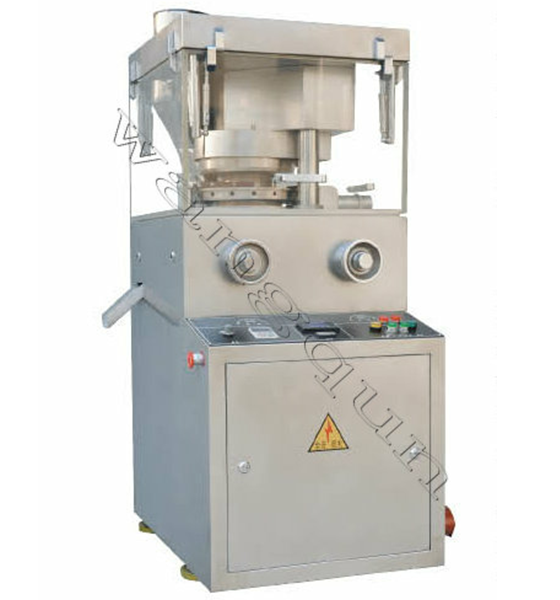Tablet Press for Allergen-Free Tablets: A Comprehensive Guide
Introduction
The pharmaceutical and nutraceutical industries are increasingly focusing on allergen-free products to cater to individuals with food allergies, sensitivities, or intolerances. Allergen-free tablets must be manufactured under stringent conditions to prevent cross-contamination and ensure product safety. A tablet press plays a crucial role in this process, as it must be designed and operated to meet strict hygiene and quality standards.
This guide explores the key considerations for selecting and operating a tablet press for allergen-free tablet production, including equipment design, cleaning protocols, material handling, and regulatory compliance.
---
1. Understanding Allergen-Free Tablet Manufacturing
1.1 What Are Allergen-Free Tablets?
Allergen-free tablets are pharmaceutical or dietary supplement formulations that exclude common allergens such as:
- Gluten (wheat, barley, rye)
- Dairy (lactose, casein)
- Soy
- Eggs
- Nuts (peanuts, tree nuts)
- Shellfish
- Other known allergens (e.g., sesame, sulfites)
These tablets must be free from cross-contamination during manufacturing, packaging, and distribution.
1.2 Challenges in Allergen-Free Tablet Production
- Cross-contamination risk: Even trace amounts of allergens can trigger reactions in sensitive individuals.
- Material sourcing: Excipients and active ingredients must be verified as allergen-free.
- Equipment cleaning: Tablet presses must be thoroughly cleaned between batches to prevent residue carryover.
- Regulatory compliance: Strict guidelines (FDA, EMA, GMP) govern allergen-free production.
---
2. Selecting a Tablet Press for Allergen-Free Production
2.1 Key Features of an Allergen-Free Tablet Press
When choosing a tablet press for allergen-free production, consider the following features:
2.1.1 Easy-to-Clean Design
- Stainless steel construction: Resistant to corrosion and easy to sanitize.
- Minimal dead spaces: Smooth surfaces and accessible components reduce residue buildup.
- Quick-disassembly tooling: Allows for thorough cleaning of punches and dies.
2.1.2 Dedicated Production Lines
- Ideally, the tablet press should be used exclusively for allergen-free products to eliminate cross-contamination risks.
- If shared with other products, strict cleaning and segregation protocols must be in place.
2.1.3 Containment Systems
- Dust extraction systems: Prevent airborne contamination.
- Closed-loop processing: Minimizes exposure to external allergens.
2.1.4 Automated Cleaning Systems
- CIP (Clean-in-Place) technology: Reduces manual cleaning errors.
- Validated cleaning procedures: Ensures no residual allergens remain.
2.2 Types of Tablet Presses Suitable for Allergen-Free Production
- Single-punch tablet press: Suitable for small-scale production with easy cleaning.
- rotary tablet press: High-speed production with advanced containment features.
- GMP-compliant presses: Designed for pharmaceutical-grade allergen-free manufacturing.
---
3. Best Practices for Operating an Allergen-Free Tablet Press
3.1 Pre-Production Checks
- Raw material verification: Ensure all ingredients are certified allergen-free.
- Equipment inspection: Confirm the press is clean and free from previous product residues.
- Dedicated tooling: Use separate punches and dies for allergen-free products.
3.2 Cleaning and Sanitization Protocols
- Dry cleaning: Remove powder residues with vacuum systems.
- Wet cleaning: Use allergen-free detergents and validated cleaning agents.
- Inspection and testing: Swab tests or allergen detection kits to verify cleanliness.
3.3 Production Monitoring
- Segregation of materials: Store allergen-free ingredients separately.
- Closed processing: Minimize exposure to airborne contaminants.
- Batch documentation: Maintain detailed records for traceability.
3.4 Post-Production Procedures
- Immediate cleaning: Prevent residue hardening.
- Tooling storage: Keep dedicated tooling in sealed containers.
- Line clearance checks: Ensure no allergens remain before the next batch.
---
4. Regulatory and Quality Considerations
4.1 Compliance with GMP and FDA/EMA Guidelines
- Good Manufacturing Practices (GMP): Ensures consistency and safety.
- Allergen control plans: Required by regulatory bodies to prevent cross-contact.
- Labeling accuracy: Must clearly state allergen-free status.
4.2 Validation and Testing
- Cleaning validation: Prove that cleaning procedures eliminate allergens.
- Allergen testing: Use ELISA or PCR methods to detect trace contaminants.
- Stability testing: Ensure allergen-free integrity over shelf life.
4.3 Supplier Audits
- Ingredient suppliers: Must provide allergen-free certifications.
- Equipment manufacturers: Should comply with hygienic design standards.
---
5. Future Trends in Allergen-Free Tablet Manufacturing
5.1 Advanced Tablet Press Technologies
- AI-driven monitoring: Detects contamination risks in real-time.
- Modular designs: Easier to clean and reconfigure for different formulations.
- 3D-printed tooling: Customizable and easier to sanitize.
5.2 Sustainable Allergen-Free Production
- Eco-friendly excipients: Reduce reliance on allergenic binders.
- Waste reduction: Closed-loop systems minimize cross-contamination risks.
5.3 Personalized Allergen-Free Tablets
- On-demand manufacturing: Small-batch production for specific allergen-free needs.
- Digital tracking: Blockchain for verifying allergen-free supply chains.
---
Conclusion
Producing allergen-free tablets requires meticulous attention to equipment selection, cleaning protocols, and regulatory compliance. A well-designed tablet press with hygienic features, dedicated production lines, and validated cleaning procedures is essential to ensure safety for consumers with allergies.
By implementing best practices in material handling, production monitoring, and quality control, manufacturers can meet the growing demand for allergen-free pharmaceutical and nutraceutical products while maintaining compliance with global standards.
Future advancements in tablet press technology and allergen detection will further enhance the safety and efficiency of allergen-free tablet manufacturing, ensuring better outcomes for sensitive populations.
---
This guide provides a comprehensive overview of tablet press selection and operation for allergen-free tablet production. For further details, consult regulatory guidelines and industry best practices.











 Phone
Phone
Comment
(0)